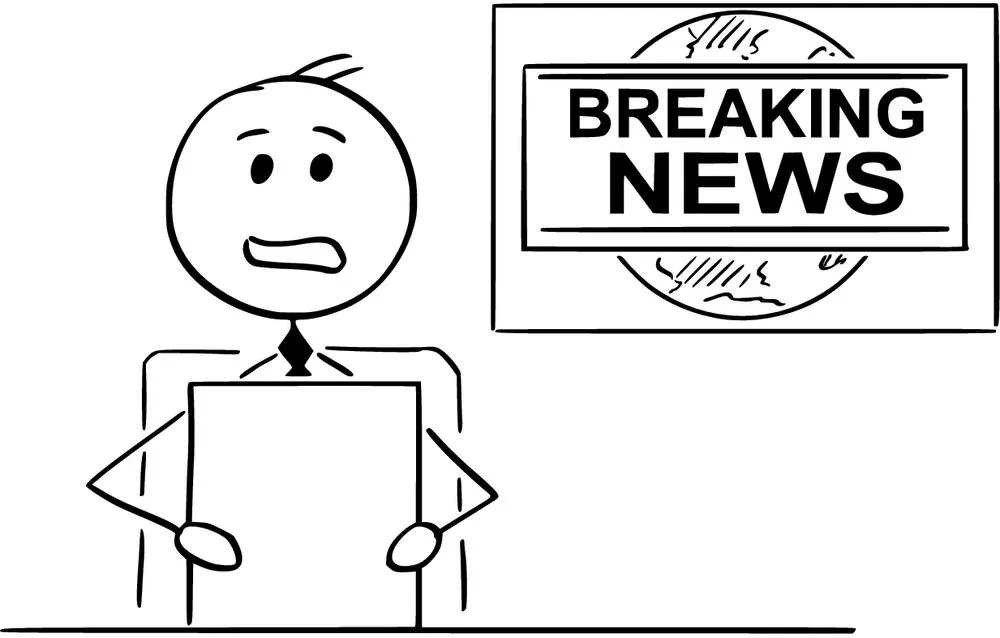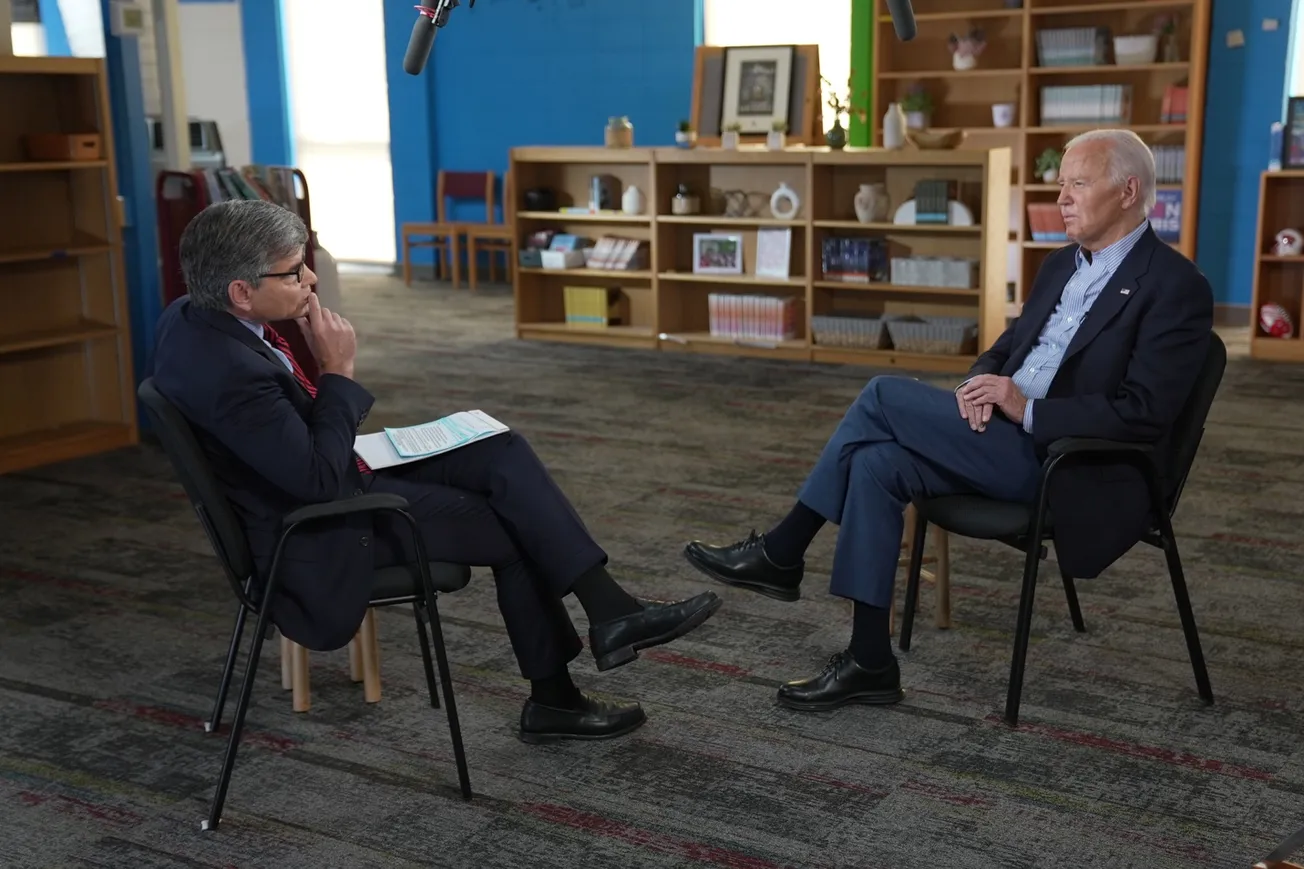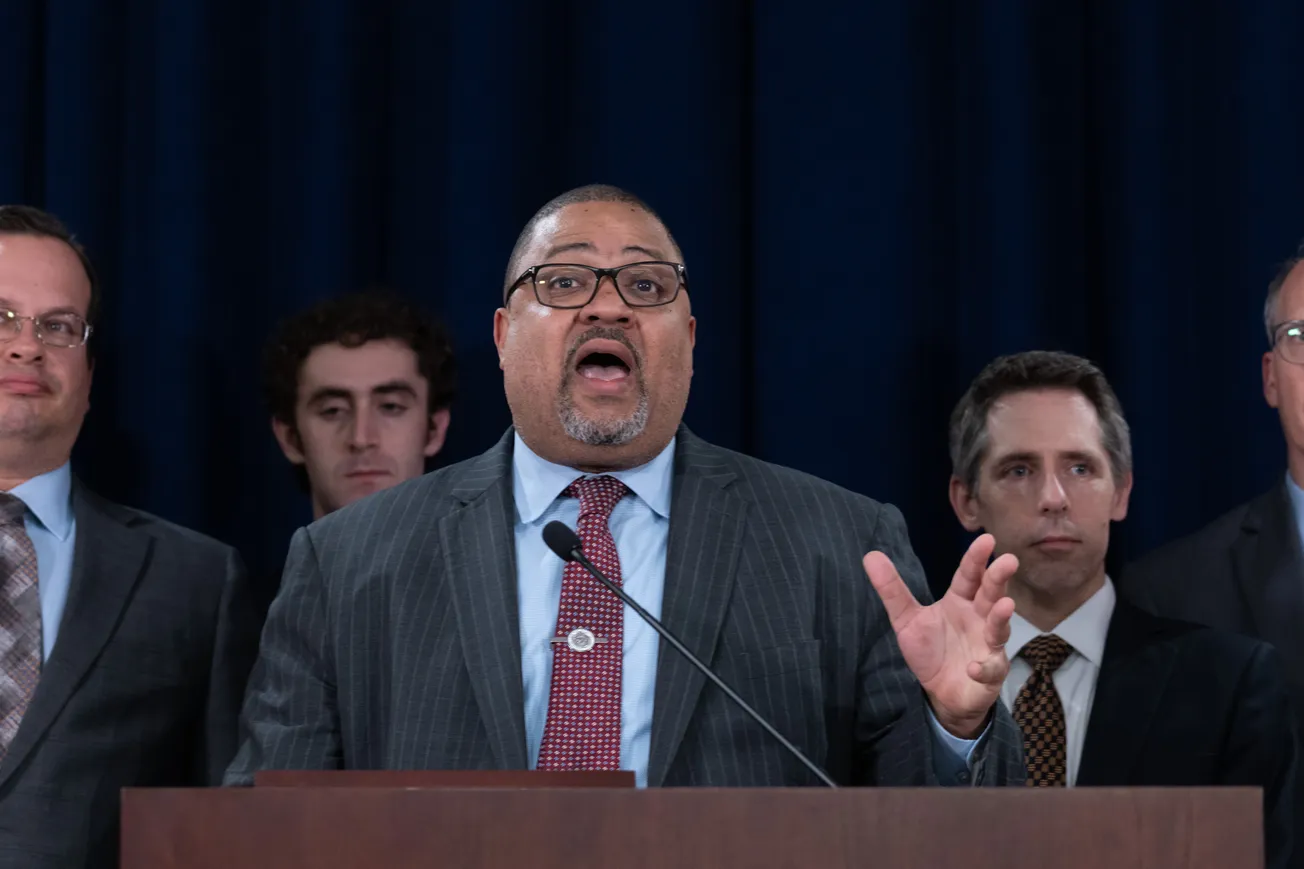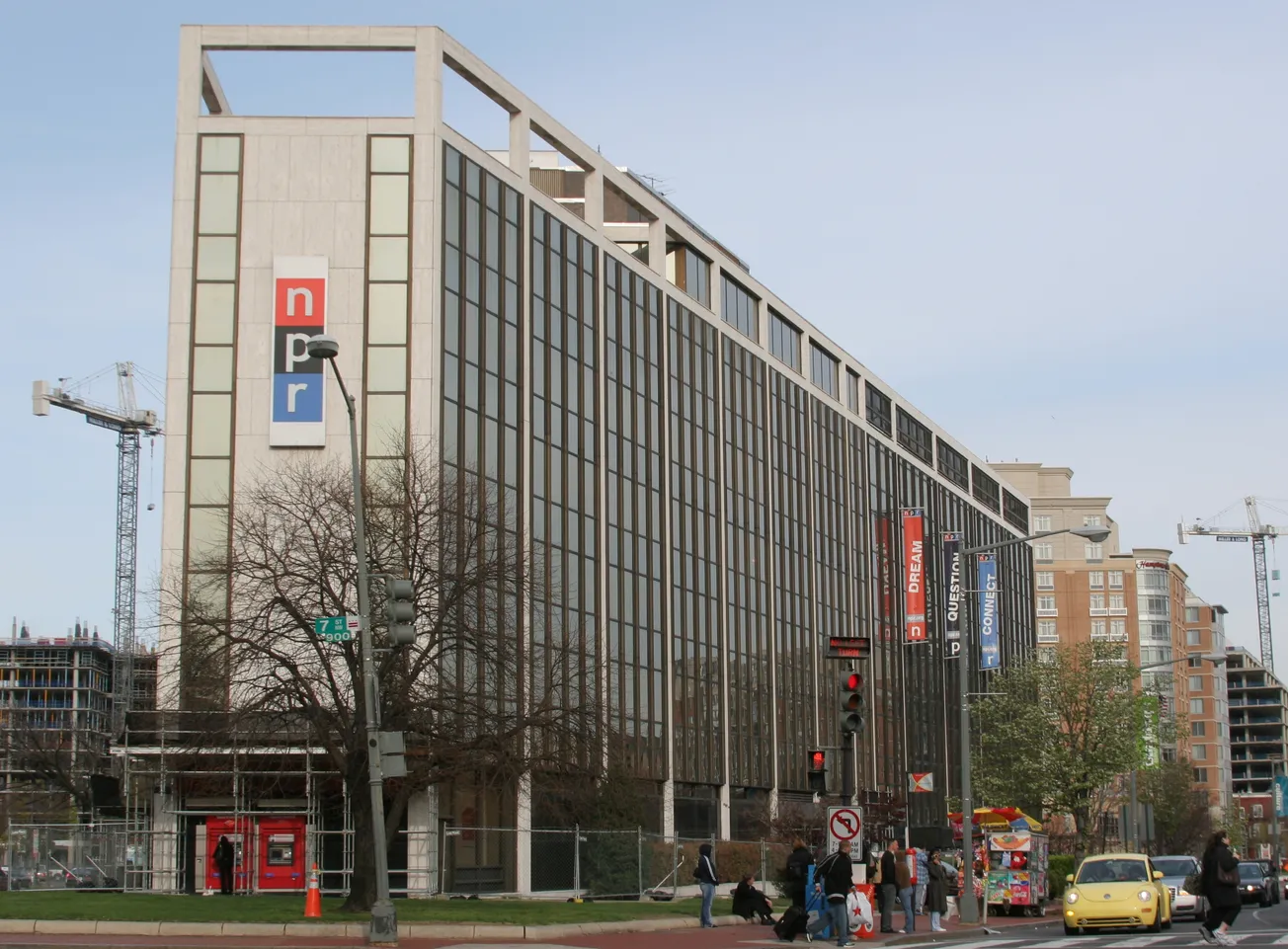Do the major media outlets in the U.S., online, on-air or in print, care whether their audience trusts them or not? It certainly doesn’t seem to be the case today. Americans’ trust in the U.S. media has plunged to its lowest levels ever, the latest I&I/TIPP Poll data show.
Both big, mainstream “traditional” media outlets and mid-sized “alternative” media outlets continue to suffer from declining revenues as their audience and readership numbers shrink. The October I&I/TIPP Poll shows that a loss in underlying trust is a key cause of media industry decline.
The poll was taken Sept. 27-29 from among 1,378 adults around the country and has a margin of error of 2.7 percentage points.
Each month, I&I/TIPP asks two questions:
First, “Generally speaking, how much trust do you have in the traditional or established news media (Example: Washington Post, New York Times, NPR, CBS News, etc.) to report the news accurately and fairly?”
Second, “Generally speaking, how much trust do you have in the alternative news media (Example: New York Post, Washington Times, NewsMax, The Daily Caller, RealClearPolitics, etc.) to report the news accurately and fairly?”
There is no good news to report to the media. Both the traditional media group and the alternative media group hit new all-time lows this month, as readers, viewers and listeners became increasingly disgruntled by what they consider to be biased and inaccurate reporting.
For the major media, 63% of those responding said they either had “little trust” (29%) or “no trust at all” (34%). Just 30% said they had either “a lot of trust” (8%) or “quite a bit of trust” (22%). Just 6% said they were “not sure.”
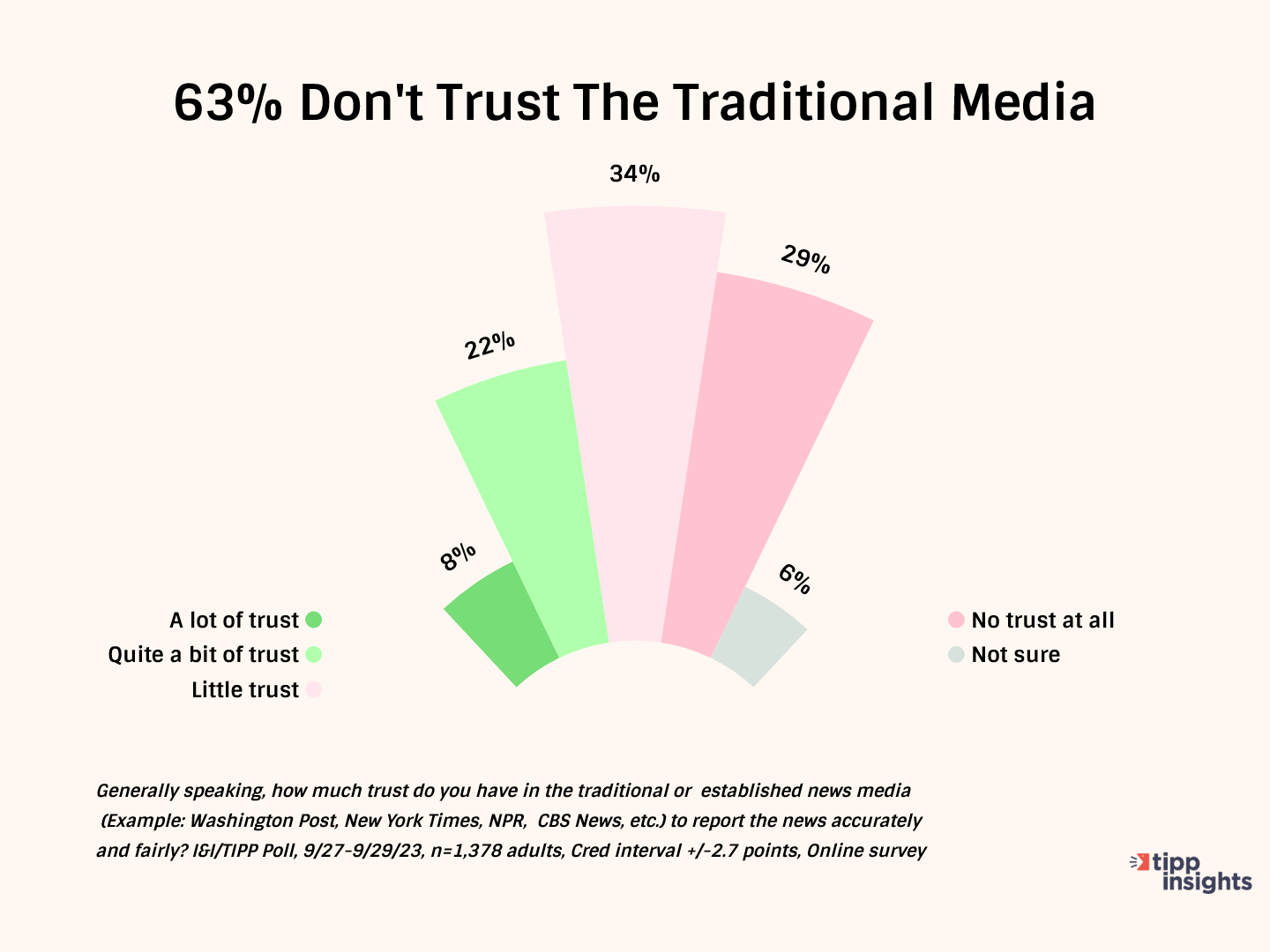
Of all the major demographic breakdowns, only one group expressed majority trust in the media: Self-described liberals, with 52% saying they trusted the traditional outlets, but a nearly-as-large 44% saying they didn’t trust the media. That compares with conservatives (19% “trust,” 78% “no or little trust”) and moderates (30% “trust,” 61% “no or little trust”).
A similar result was seen for the “alternative news media.” Within that media grouping, only 21% said they had either “a lot of trust” (6%) or “quite a bit of trust” (15%), while 70% said they had only “little trust” (49%) or “no trust” (21%). Another 9% answered “not sure.”
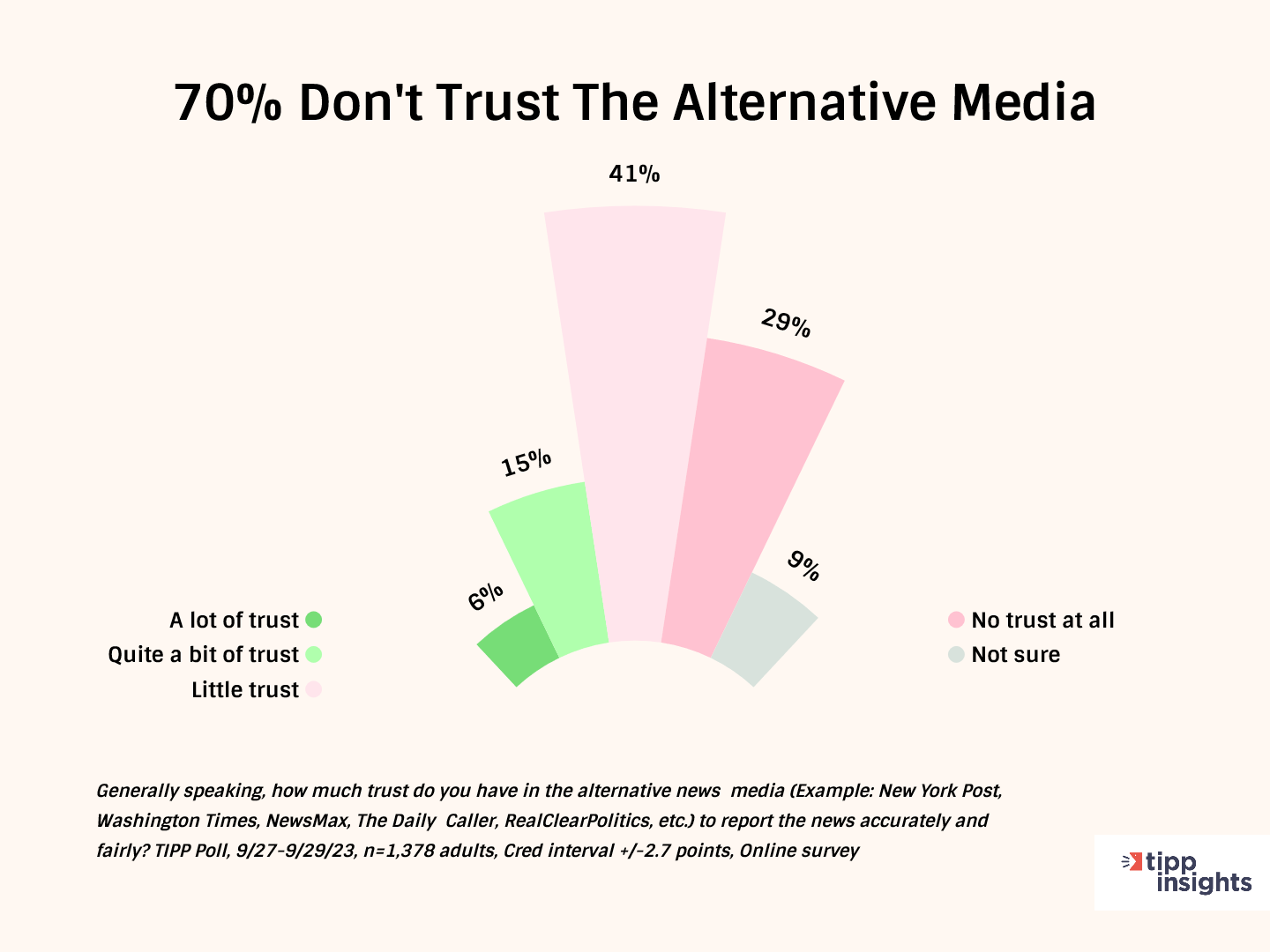
As part of its ongoing monitoring of public opinion about the media, I&I/TIPP also creates an index for both media polls, enabling month-to-month comparisons of opinion trends.
This month’s indexes show just how far the media have fallen in public esteem. The Traditional Media Trust Index has dropped to 35.8, its lowest ever, and well below its high of 51 and its long-term average of 41.6. Similarly, the Alternative Media Index now stands at just 30, also an all-time low, and significantly under its high of 44.8 and its average of 37.2.
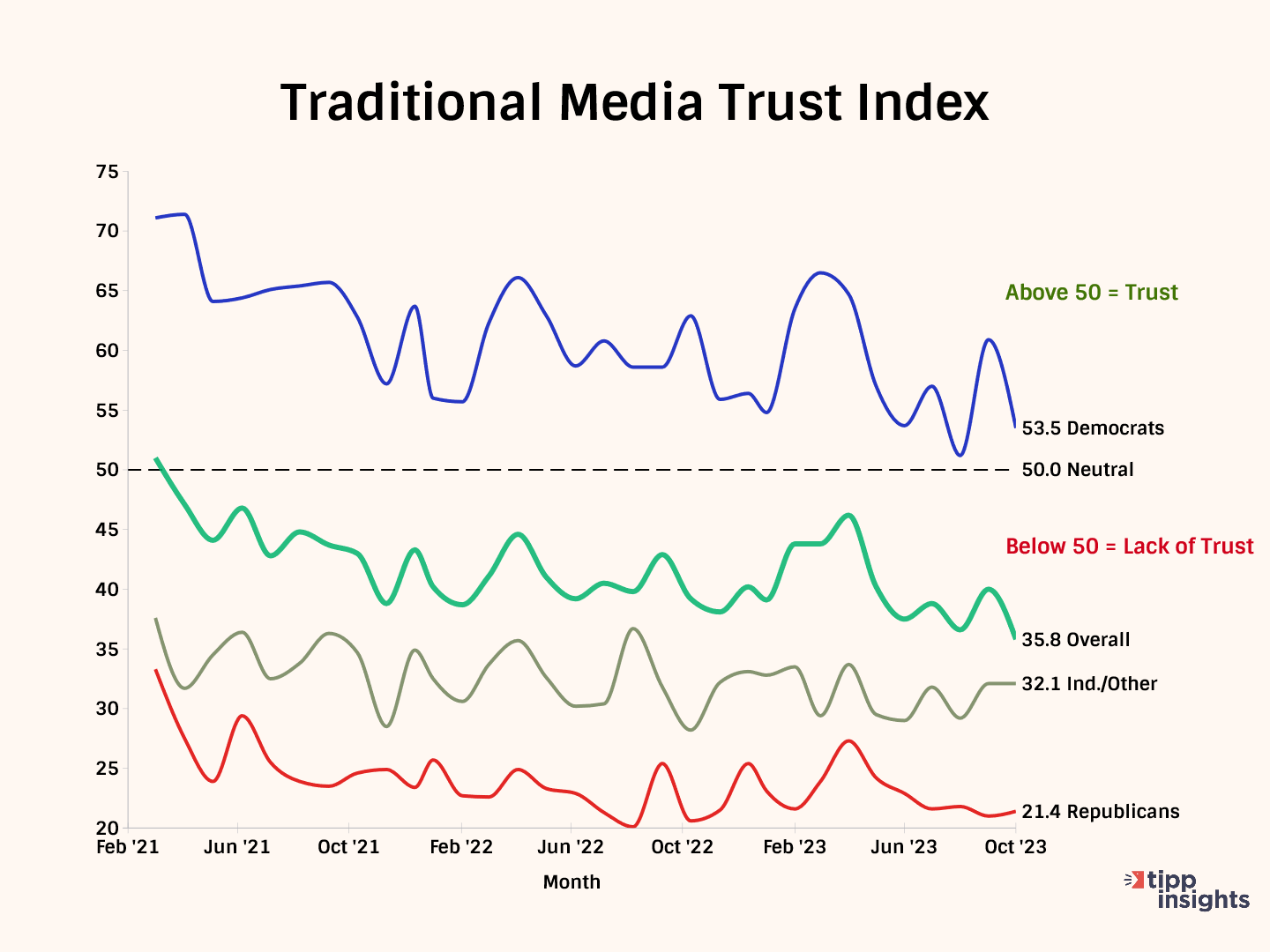
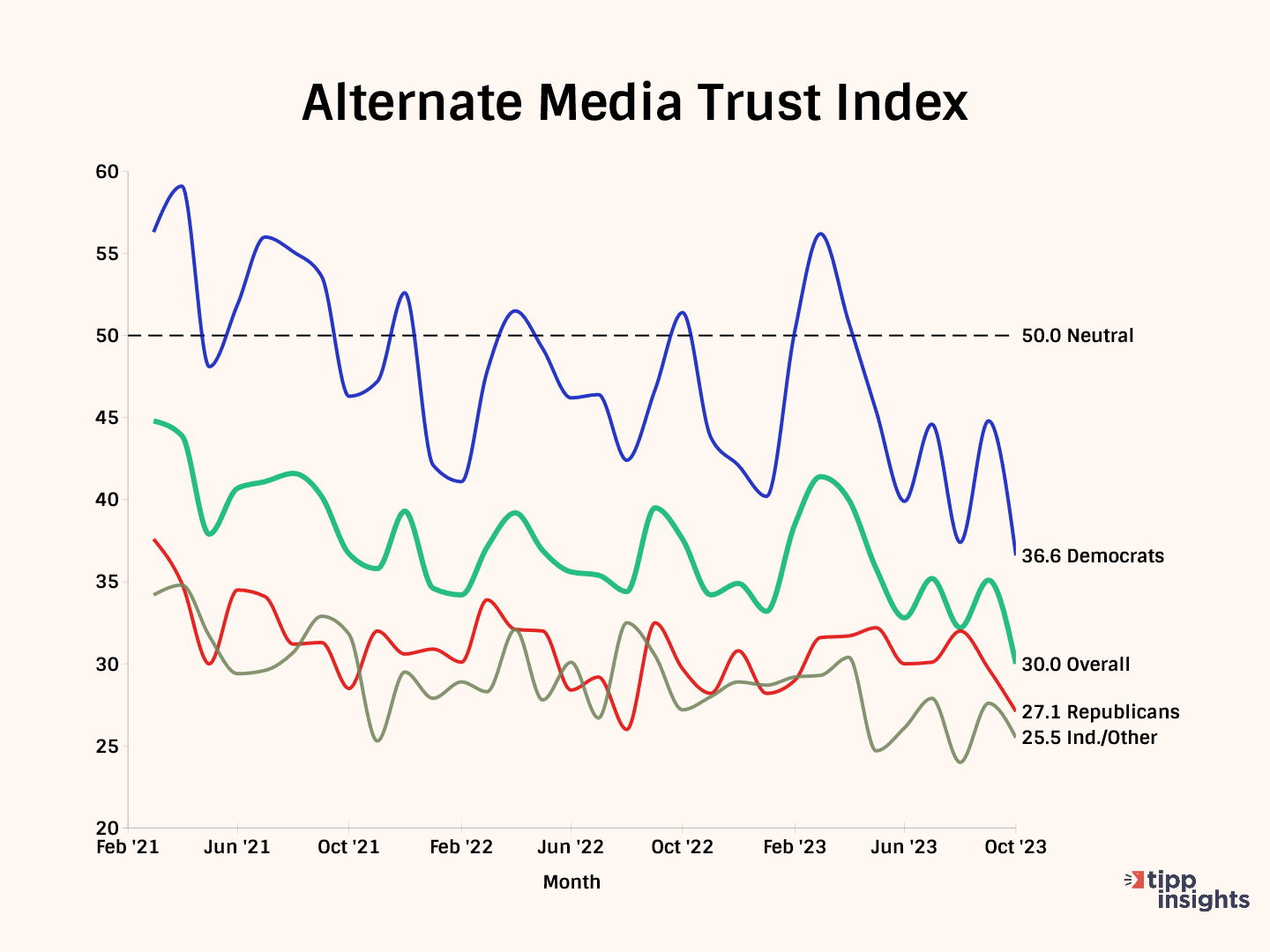
In short, America’s big media have a massive public relations disaster on their hands.
Note too that this month’s poll came before the Oct. 7 terrorist attack by Hamas against Israel, killing an estimated 1,300 people, and leading to the kidnapping of an estimated 200 other people, some of whom have since been murdered.
The media have come in for heavy criticism over their initial one-sided coverage of the terrorist attack on a “concert for peace” and nearby kibbutz settlements in Southern Israel, with the media irresponsibly reporting a Hamas claim that blamed a “missile attack” on a Gaza hospital on Israel.
It later turned out, the missile was an errant Hamas weapon, not Israeli, and casualties were far fewer than the 500.
So the latest anger over biased media coverage has yet to be reflected in the poll.
Yet, the egregious misreporting on Israel’s war with Hamas highlights the media’s growing crisis of believability. Recent developments within the media industry reflect how serious the credibility problem is.
- The Washington Post announced last week it will lay off 240 workers, roughly 10% of its workforce, because, as the newspaper reported (quoting interim CEO Patty Stonesifer), “The Post’s subscription, traffic and advertising projections over the past two years had been ‘overly optimistic’ and that the company is looking for ways ‘to return our business to a healthier place in the coming year’. ” The Post is expected to lose $100 million this year.
- Disney’s sports flagship ESPN is fighting falling ratings, as media critics and viewers alike complain about its increasing “woke” coverage of sports. With more TV viewers cord-cutting and viewing sports a la carte or via handheld devices, ESPN profits plunged 20% in the last nine months, according to the Wall Street Journal. And even after layoffs last summer, Disney is reportedly looking to unload the sports network.
- Meanwhile, The New York Times’ coverage of the terrorist attack on Israel was so badly one-sided that it lost its verification badge from X (formerly known as Twitter). Other media have also suffered cracks in their credibility for publishing what amounted to little more than Hamas propaganda.
Worse still, social media’s decline as a source for readers is hitting established media hard. Major outlets saw their web traffic from social media drop from 11.5% in September of 2020 to just 6.5% last month. This is “alarming for publishers who have relied on these platforms for web traffic and advertising revenue,” wrote Kevin O’Keefe, a media and law blogger.
But parlous finances are merely a symptom of a far deeper malaise: A loss of trust that the media are unbiased.
The I&I/TIPP data aren’t the only to show this decline in media trust. Gallup, and others, have shown similar trends. It portends an ugly year ahead, as the nation prepares for an already-contentious 2024 presidential contest.
An AP/NORC Poll earlier this year found that three in four Americans believe the news media “is increasing political polarization in this country, and just under half say they have little to no trust in the media’s ability to report the news fairly and accurately.”
This should be a stunning rebuke to the media. Instead, media outlets deny any political bias, despite surveys of journalists themselves that prove it.
I&I/TIPP publishes timely, unique, and informative data each month on topics of public interest. TIPP’s reputation for polling excellence comes from being the most accurate pollster for the past five presidential elections.
Terry Jones is an editor of Issues & Insights. His four decades of journalism experience include serving as national issues editor, economics editor, and editorial page editor for Investor’s Business Daily.
We could use your help. Support our independent journalism with your paid subscription to keep our mission going.

